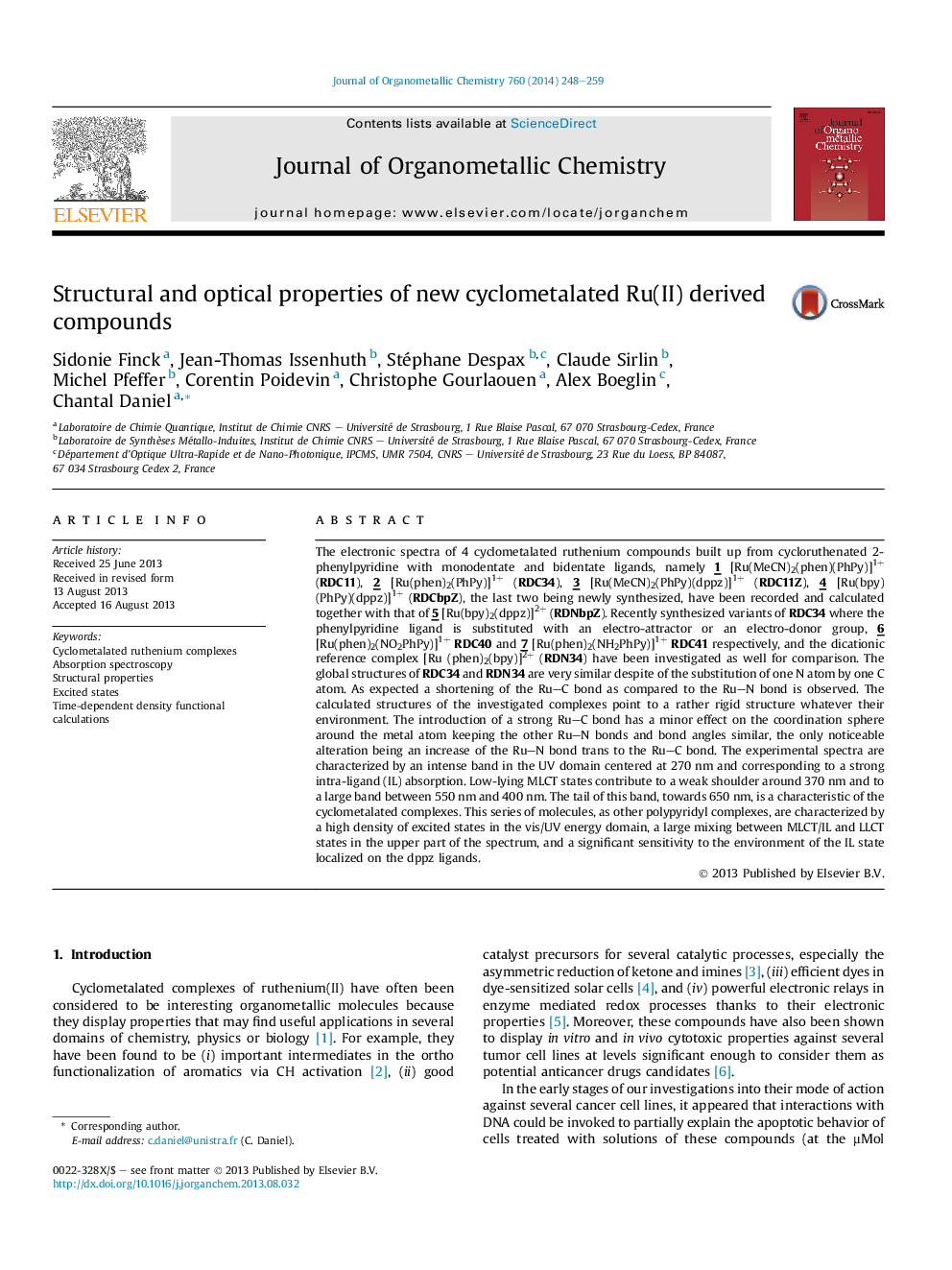| Article ID | Journal | Published Year | Pages | File Type |
|---|---|---|---|---|
| 1325583 | Journal of Organometallic Chemistry | 2014 | 12 Pages |
•Synthesis of new molecules.•Characterization.•Optical properties.•Comparison between cyclometalated and classical polypyridyl complexes.
The electronic spectra of 4 cyclometalated ruthenium compounds built up from cycloruthenated 2-phenylpyridine with monodentate and bidentate ligands, namely 1 [Ru(MeCN)2(phen)(PhPy)]1+ (RDC11), 2 [Ru(phen)2(PhPy)]1+ (RDC34), 3 [Ru(MeCN)2(PhPy)(dppz)]1+ (RDC11Z), 4 [Ru(bpy)(PhPy)(dppz)]1+ (RDCbpZ), the last two being newly synthesized, have been recorded and calculated together with that of 5 [Ru(bpy)2(dppz)]2+ (RDNbpZ). Recently synthesized variants of RDC34 where the phenylpyridine ligand is substituted with an electro-attractor or an electro-donor group, 6 [Ru(phen)2(NO2PhPy)]1+RDC40 and 7 [Ru(phen)2(NH2PhPy)]1+RDC41 respectively, and the dicationic reference complex [Ru (phen)2(bpy)]2+ (RDN34) have been investigated as well for comparison. The global structures of RDC34 and RDN34 are very similar despite of the substitution of one N atom by one C atom. As expected a shortening of the Ru–C bond as compared to the Ru–N bond is observed. The calculated structures of the investigated complexes point to a rather rigid structure whatever their environment. The introduction of a strong Ru–C bond has a minor effect on the coordination sphere around the metal atom keeping the other Ru–N bonds and bond angles similar, the only noticeable alteration being an increase of the Ru–N bond trans to the Ru–C bond. The experimental spectra are characterized by an intense band in the UV domain centered at 270 nm and corresponding to a strong intra-ligand (IL) absorption. Low-lying MLCT states contribute to a weak shoulder around 370 nm and to a large band between 550 nm and 400 nm. The tail of this band, towards 650 nm, is a characteristic of the cyclometalated complexes. This series of molecules, as other polypyridyl complexes, are characterized by a high density of excited states in the vis/UV energy domain, a large mixing between MLCT/IL and LLCT states in the upper part of the spectrum, and a significant sensitivity to the environment of the IL state localized on the dppz ligands.
Graphical abstractElectronic density variation associated to the lowest MLCT transition of RDC34.Figure optionsDownload full-size imageDownload as PowerPoint slide
